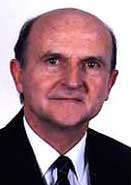|
 This
year I attended the annual congresses of the four regional seed
trade associations: AFSTA in Tunisia in March, FELAS in Paraguay
in July, APSA in South Korea in September and ESA in Belgium in
October. The FELAS, APSA and ESA congresses were each attended
by around 500 participants from 17 (FELAS) to 37 (APSA)
countries. With a smaller number of delegates (170 representing
38 countries) the AFSTA congress was also a success when one
considers its ‘youth’. Together with 1269 participants from 58
countries who were in Berlin for the ISF congress, the numbers
confirm the vitality of our industry and the need for regular
meetings to exchange views and develop business opportunities. This
year I attended the annual congresses of the four regional seed
trade associations: AFSTA in Tunisia in March, FELAS in Paraguay
in July, APSA in South Korea in September and ESA in Belgium in
October. The FELAS, APSA and ESA congresses were each attended
by around 500 participants from 17 (FELAS) to 37 (APSA)
countries. With a smaller number of delegates (170 representing
38 countries) the AFSTA congress was also a success when one
considers its ‘youth’. Together with 1269 participants from 58
countries who were in Berlin for the ISF congress, the numbers
confirm the vitality of our industry and the need for regular
meetings to exchange views and develop business opportunities.
Regional meetings
are always enlightening as it allows me to learn about and
better understand the challenges being faced by the seed
industry in different parts of the world, and to put them into
perspective. What are these issues that are occupying the seed
industry?
Globally speaking,
three issues dominate the scene: the effective protection of
intellectual property, the development of GM crops and
phytosanitary regulations. With respect to IP there are two main
concerns viz. enforcement of existing laws to prevent the abuse
of farm saved seed and the need to improve protection of
parental hybrid lines. The development of GM varieties is
hampered by the lack of appropriate legislations and where
regulations exist their cumbersome nature, and the question of
adventitious presence of GM material in non-GM crops. Few
national and no international agreements on adventitious
presence have been reached five years after discussion. The
tendency of countries to revisit their phytosanitary laws
without serious scientific reasoning has worrying consequences
on the international seed trade.
In addition, the
issues debated at several meetings were: implementation of the
CBD and the FAO IT, establishment of national, regional and
international databases of seed statistics, identity
preservation and traceability, organic seed, the impact of
strong national seed associations on public-private sector
relationship particularly in developing countries and countries
with economies in transition, and accreditation.
It is no surprise
that these topics are no different from those presented by the
directors/secretaries of the national associations at the
occasion of their meeting during the congress in Berlin.
However, an additional point raised in Berlin was that the
liability facing seed companies was rising beyond what was usual
for the seed trade. It is relevant here to inform members that
the ISF Errors and Omissions Insurance programme established in
1999 is functioning very well. Those desirous of joining this
programme should contact the ISF Secretariat.
The issues the
seed industry is faced with are indeed impressive. The need for
concerted action at an international level is obvious. We will
certainly have to establish priorities for the coming years.
But to finish on a
more upbeat note, it is satisfying to be able to close the
chapter on an issue that the industry has worked hard for years
to resolve. In 1994 ISF (then FIS) launched an initiative to
gain accreditation for seed companies to certify and test seed.
2004 saw the culmination of this effort when the principle of
accreditation of seed company employees was included in the OECD
Seed Schemes and accreditation of seed company laboratories was
added to ISTA’s constitution. Accredited seed companies can now
inspect fields, and sample, test and certify seed under official
supervision. Accredited company seed testing labs will be able
to issue ISTA certificates. It is now up to national
associations to pursue the actual implementation of this new
rule at the national level.
This editorial is
copyright © The International Seed Federation (ISF). It appears
in the ISF Info newsletter Vol. XI No. 4, Oct 2004 and is
reprinted here with permission from the International Seed
Federation. |